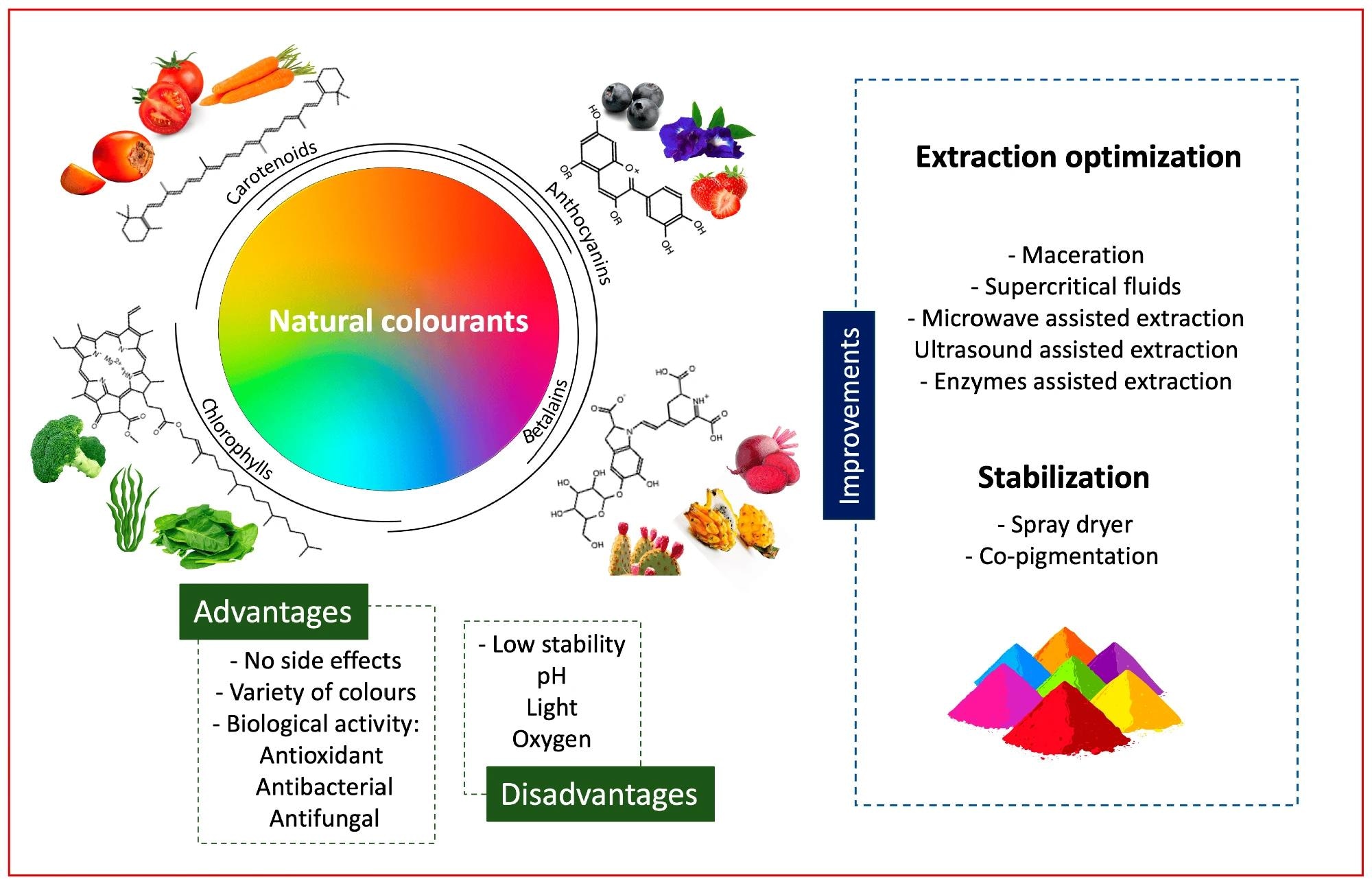In a recent review published in the journal Foods, researchers in Spain and Portugal reviewed existing data on the potential of natural foods as coloring agents.
Synthetic and natural artificial food colorants are commonly utilized in children's items due to their high intensity, stability, consistency, and cost-effectiveness. Their usage, however, has been contentious, with studies demonstrating a rapid improvement in attention deficit and hyperactivity disorder (ADHD) behavior in hyperactive children and an increase in ADHD prevalence in the general kid population as a result of the use of artificial food colors and additives such as sodium benzoate preservatives.
 Study: Natural Sources of Food Colorants as Potential Substitutes for Artificial Additives.
Study: Natural Sources of Food Colorants as Potential Substitutes for Artificial Additives.
About the review
In the present review, researchers reviewed natural substitutes for artificial food colors. The Web of Science Scopus, ScienceDirect, and PubMed databases were searched for relevant scientific articles, opinions, and regulations from official databases published between 2008 and 2023.
Primary color-imparting compounds in natural foods
Anthocyanins, betalains, carotenoids, and chlorophylls are chemicals in plants with coloring qualities. The hues of anthocyanins range from blue to red, whereas betalains might be red-violet, yellow-orange, or pink. Carotenoids range in color from red to yellow and are very susceptible to destruction by oxygen, light, heat, acids, and enzymes.
90% of the anthocyanins found in plants are cyanidin, delphinidin, pelargonidin, peonidin, malvidin, and petunidin. Berry fruits, red sweet potato, and purple corn contain them. However, temperature, light, metal ions, pH, oxygen, co-pigments, and enzymes limit their stability. Betalains are nitrogen-containing water-soluble pigments in betacyanins and betaxanthins, which exhibit pinkish-violet and yellowish-orange hues. They can be found in flowers, fruits, roots, and leaves. Red beetroots, amaranth, dragon fruit, and cactus fruits are the most common culinary sources of betalains.
Carotenoids are lipophilic, yellowish-red colored pigments present in fruits, seeds, flowers, and roots. They have antioxidant and color-attracting properties and function as plant hormone precursors. Approximately 50 distinct carotenoid pigments have been identified in popular human foods such as tomatoes, Gac fruit, and persimmons.
Chlorophylls are natural green colorants in several green vegetables and fruits, including alfalfa, spinach, nettles, and grass. Several processes can degrade these pigments, producing a color shift from green hues to brown, notably magnesium ion replacement by two hydrogen ions.
Natural food sources as potential substitutes for synthetic food colors
Plant extracts, such as anthocyanins, carotenoids, and chlorophylls, have been permitted for use as colorants by the Food and Drug Administration (FDA) and the European Food Safety Authority (EFSA). However, certain natural colors are restricted to specific goods, such as butter pea extracts, which have limited use in juices, drinks, sweets, and ice cream in the United States.
Natural red food colorants can be made utilizing anthocyanins to replace artificial red colors exhibiting diverse shades of red. Anthocyanin (E-163), a food colorant derived from purple carrots, grapes, radish, and red cabbage, is authorized in the European Union. This pigment can also be found in banana bracts, red onion, Hibiscus sabdariffa L. red calyces, red cabbage, purple or black carrot, and berries.
On examining the anthocyanin content of blueberries, researchers found that the stability of anthocyanin increased to 76% after one month of storage following microencapsulation with xanthan gum and carboxymethyl starch. They discovered optimum conditions to extract anthocyanins using supercritical carbon dioxide-aided extraction, resulting in 92% material recovery.
Researchers also tested 30 to 50% maltodextrin as an encapsulation agent for extracting anthocyanin from blueberries; they achieved color parameters of L*: 54 and 53, a*: 37 and 38, and b*: 1.40 and 2.90, where L* indicates lightness, a* is the red (+)/green (−) coordinate, and b* is the yellow (+)/ blue (−) coordinate, as per the CIELAB color model.
Blackberry (Rubus species) extracts have also been extensively examined. Researchers enhanced the shelf-life and color stability of spray-dried blackberry extracts by adding ferulic acid and rutin, with an increase in half-life from 151 days to 158 days and 193 days, respectively. Morus nigra L. is another blackberry variety with a high anthocyanin content, primarily cyanidin-3-O-glucoside and its derivates.
Chokeberry fruits (Aronia melanocarpa (Michx.) Britton) have a high anthocyanin content, with the majority of it being cyanidin glucoside (98%). Researchers produced red-purple extracts enriched with anthocyanins from the leaves of Rhoeo spathacea (Swartz) Stearn.
In the European Union and the United States, artificial blue colorants such as brilliant blue FCF and indigo carmine/indigotine are permitted for use as food colorants. Natural blue food colorants include anthocyanins in blue flowers and fruits such as butterfly pea petals and Centaurea cyanus L. blossoms. Carotenoids from various natural sources can be also employed as food colorants, increasing the quality and safety of food items.
Conclusions
To summarize, colorant chemical compounds such as anthocyanins, betalains, carotenoids, chlorophylls, and phycocyanins are found in plants, fruits, flowers, and grains, making them potential sources of natural food colors. These natural sources, which may not have the same effects as manufactured ones, exhibit biological activity that may offer health advantages.
Several techniques for extracting colorant chemicals have been investigated; however, the large variety of possibilities and variances in the matrix due to different growing and cropping places or periods make it difficult to produce homogenous results.
Moreover, the inability of natural colorants to withstand light, pH, temperature, and oxygen is a significant drawback. According to the authors, further research is required to increase the availability and stability of naturally obtained food coloring agents.